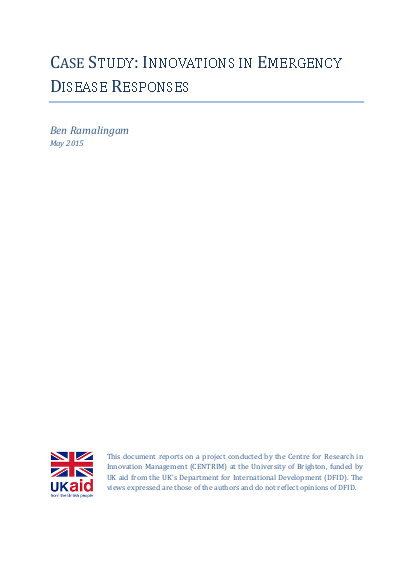
This study seeks to analyse and explain how innovation works in emergency communicable disease responses. It does so through use of the concept of an innovation ecosystem, the set of factors and actors that come together in ways that might foster or inhibit effective innovation processes. It looks at innovations across the range of activities involved in communicable disease responses in emergencies, and seeks to better understand the ecosystem by reviewing both positive examples, where innovations have emerged and been successful, and more challenging examples, where innovations have not happened, or where they have not been successful. By looking across such contrasting examples, the study aims for a rounded picture of innovation in emergency disease responses, highlighting both the strengths and the weaknesses in the system. There have been some notable successes, amongst them the development of new diagnostics for TB, or new approaches to prevention, for disease surveillance, and treatment and management. There have been successful innovations within crisis responses, such as the response to polio outbreaks in Syria. But there are also notable failures include ineffective utilization of innovations in rapid responses such as Ebola in West Africa, and cholera in Haiti. The study reveals an innovation ecosystem that is good in certain parts, and at certain times, but which is heavily reliant on a number of critical internal actors, and on external capacities and resources. Moreover, the ecosystem is far from systematic, and is not always well suited to the nature and dynamics of emergency work.